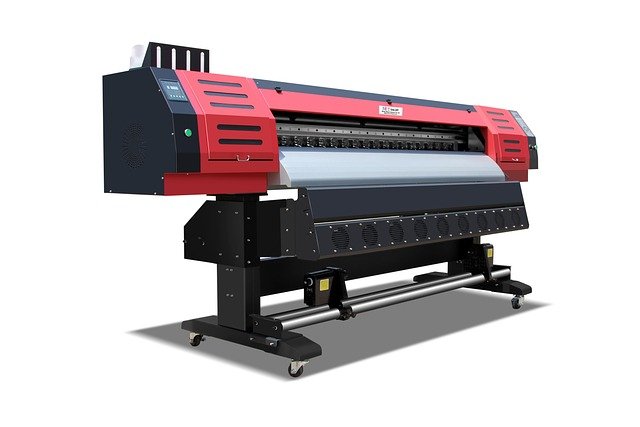Learn About What Happens To Liquidated Company Printers - A Complete Guide
When businesses close their doors permanently or file for bankruptcy, their assets must be sold to recover debts and settle obligations. Among these assets, office equipment like printers often represents a significant portion of liquidated inventory. Understanding this process can help buyers find quality equipment at reduced prices while helping creditors recover maximum value from business assets. The liquidation process involves multiple steps, from asset evaluation to final sale, creating opportunities for various buyers in the secondary market.

What are Liquidated Company Printers
Liquidated company printers are business-grade printing equipment sold when companies cease operations, downsize significantly, or undergo bankruptcy proceedings. These devices typically include high-capacity laser printers, multifunction units, wide-format plotters, and commercial-grade inkjet systems originally purchased for office environments. Unlike consumer printers, these machines are often built for heavy-duty use with monthly print volumes reaching thousands of pages. The equipment may range from nearly new devices to well-maintained older models, depending on the company’s operational timeline and maintenance practices.
How to Get Liquidated Company Printers
Several channels exist for purchasing liquidated business printers. Auction houses frequently conduct live and online auctions featuring office equipment from closed businesses. Government surplus sales offer printers from liquidated contractors or agencies that have updated their equipment. Liquidation companies specialize in bulk sales of business assets, often selling directly to resellers or accepting bids from individual buyers. Online marketplaces have dedicated sections for business liquidations, while local classified advertisements sometimes feature direct sales from closing offices. Working with certified liquidation professionals ensures proper documentation and reduces risks associated with equipment provenance.
What Happens To Liquidated Company Printers During Processing
The liquidation process begins with professional asset evaluation, where specialists assess printer condition, model specifications, and current market value. Equipment is then categorized by type, functionality, and estimated worth to determine appropriate sales channels. High-value or newer printers may be sold individually through specialized auctions, while older or damaged units might be grouped into bulk lots. Documentation review ensures clear title transfer and identifies any leasing obligations that could affect the sale. Some printers undergo basic refurbishment, including cleaning and minor repairs, to maximize recovery value before reaching the market.
Liquidated Company Printers Pricing Insights
Pricing for liquidated business printers varies significantly based on equipment age, condition, and market demand. Commercial laser printers originally costing $2,000-$5,000 typically sell for 20-40% of retail value at liquidation sales. High-end multifunction devices with original prices exceeding $10,000 may fetch $2,000-$4,000 depending on usage hours and maintenance records. Wide-format printers and specialty equipment often retain higher percentages of original value due to limited availability in secondary markets.
| Printer Type | Original Price Range | Liquidation Price Range | Typical Condition |
|---|---|---|---|
| Office Laser Printer | $800-$2,500 | $200-$800 | Good to Excellent |
| Multifunction Device | $2,000-$8,000 | $500-$2,500 | Fair to Good |
| High-Volume Copier | $5,000-$15,000 | $1,200-$5,000 | Variable |
| Wide-Format Printer | $3,000-$12,000 | $800-$4,000 | Good |
Prices, rates, or cost estimates mentioned in this article are based on the latest available information but may change over time. Independent research is advised before making financial decisions.
Factors Affecting Liquidated Printer Values
Multiple variables influence the final selling price of liquidated business printers. Equipment age plays a crucial role, with devices under three years old commanding premium prices compared to older models. Page count history significantly impacts value, as high-usage machines may require expensive maintenance or component replacement soon after purchase. Brand reputation affects pricing, with established manufacturers like HP, Canon, and Xerox typically maintaining higher resale values than lesser-known brands. Market timing influences demand, particularly during back-to-school seasons or when businesses expand operations.
Benefits and Considerations for Buyers
Purchasing liquidated company printers offers substantial cost savings compared to new equipment, making advanced features accessible to smaller businesses and home offices. These devices often include premium capabilities like duplex printing, advanced security features, and high-capacity paper handling originally designed for demanding office environments. However, buyers should consider potential drawbacks including limited or no warranty coverage, possible high page counts, and potential difficulty obtaining service support. Thorough inspection before purchase helps identify any mechanical issues or excessive wear that could affect long-term reliability.
Understanding the liquidation process for company printers provides valuable insights for both buyers seeking quality equipment and businesses facing closure. The secondary market for these devices creates opportunities for significant savings while ensuring useful equipment continues serving productive purposes rather than becoming waste. Success in this market requires careful evaluation of equipment condition, realistic pricing expectations, and thorough research of available options through various sales channels.




